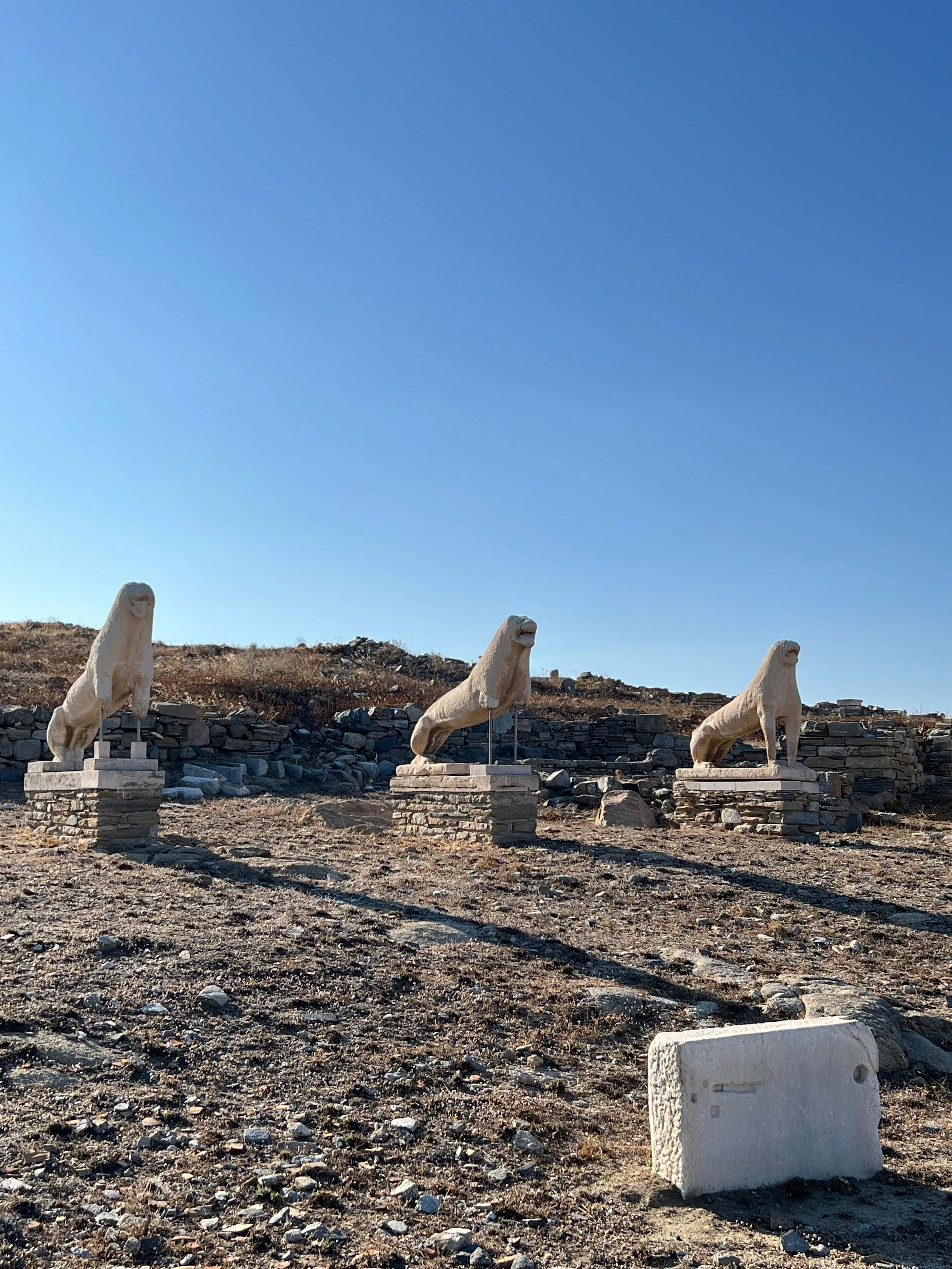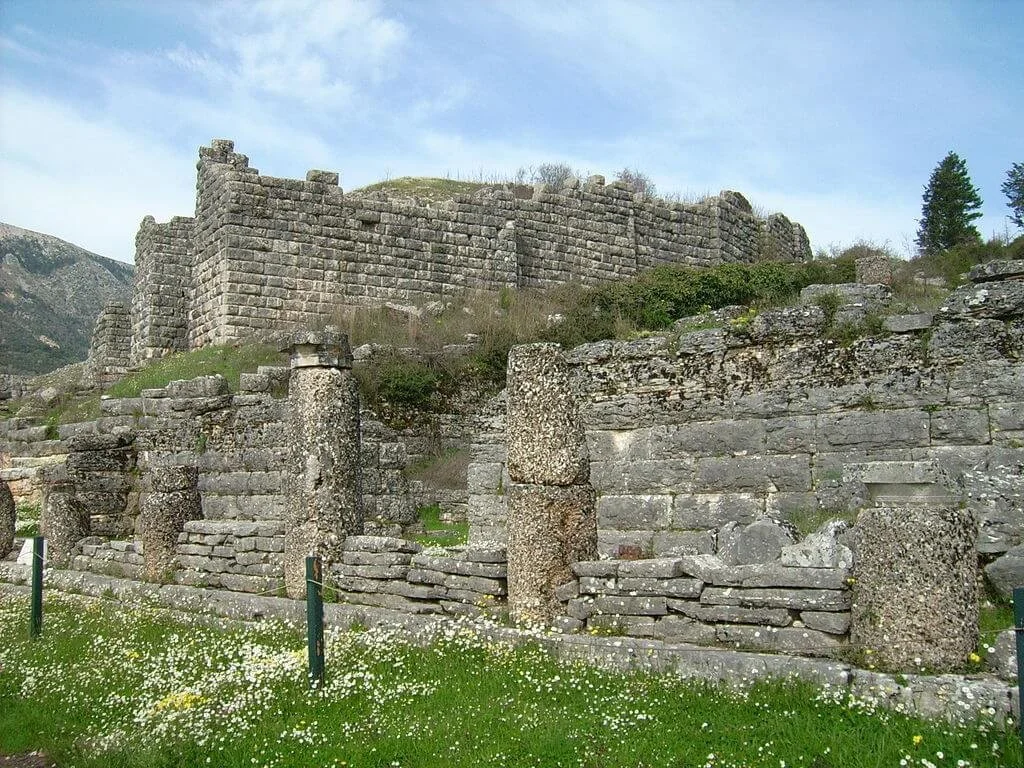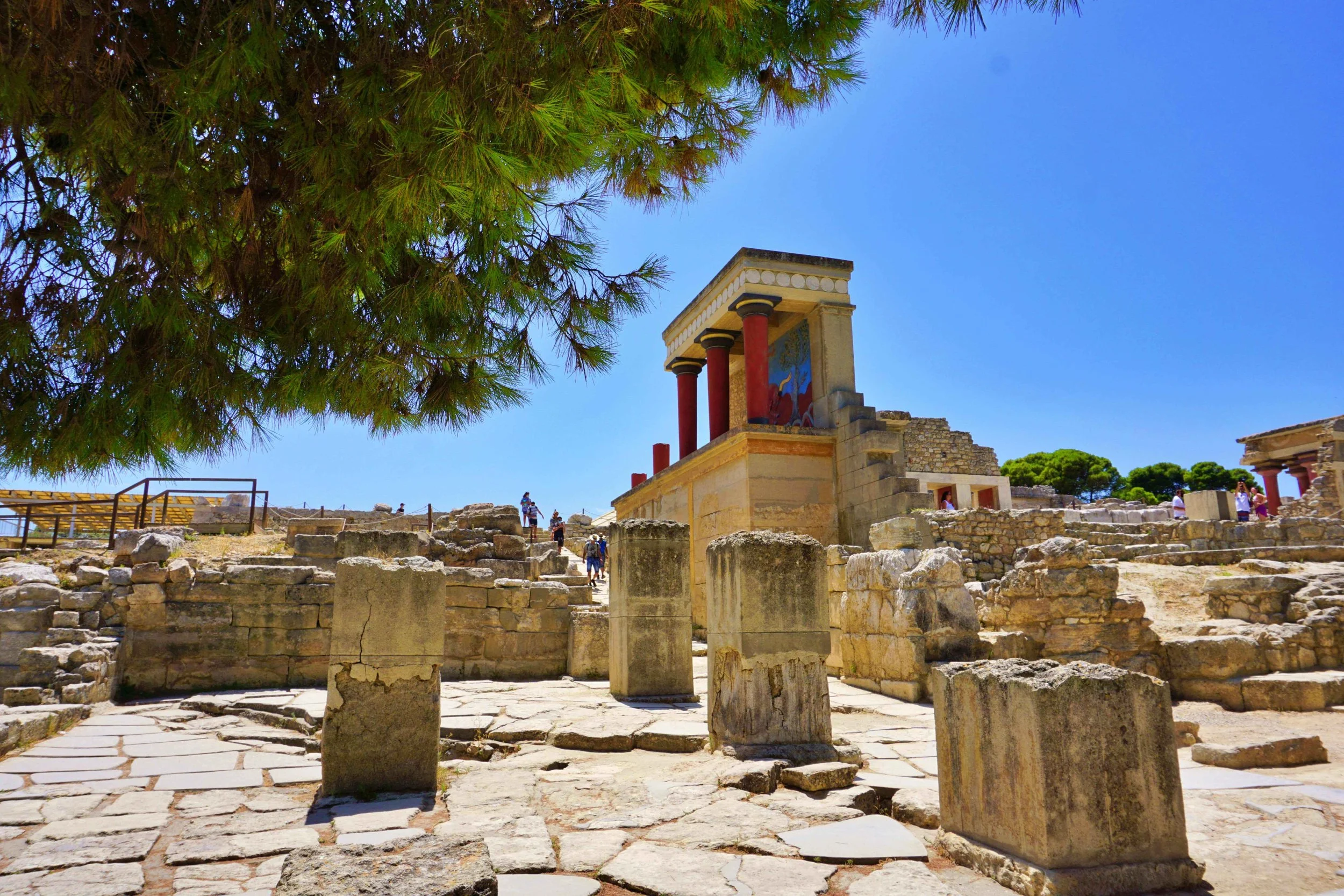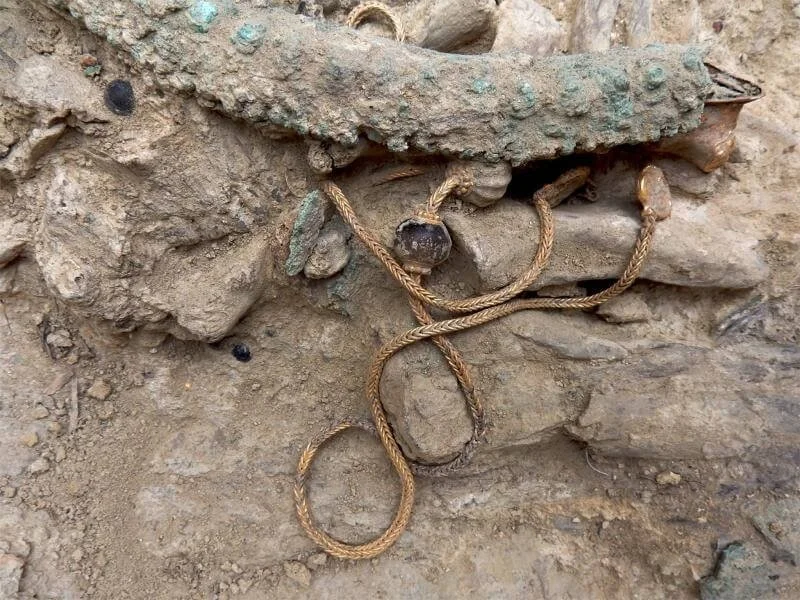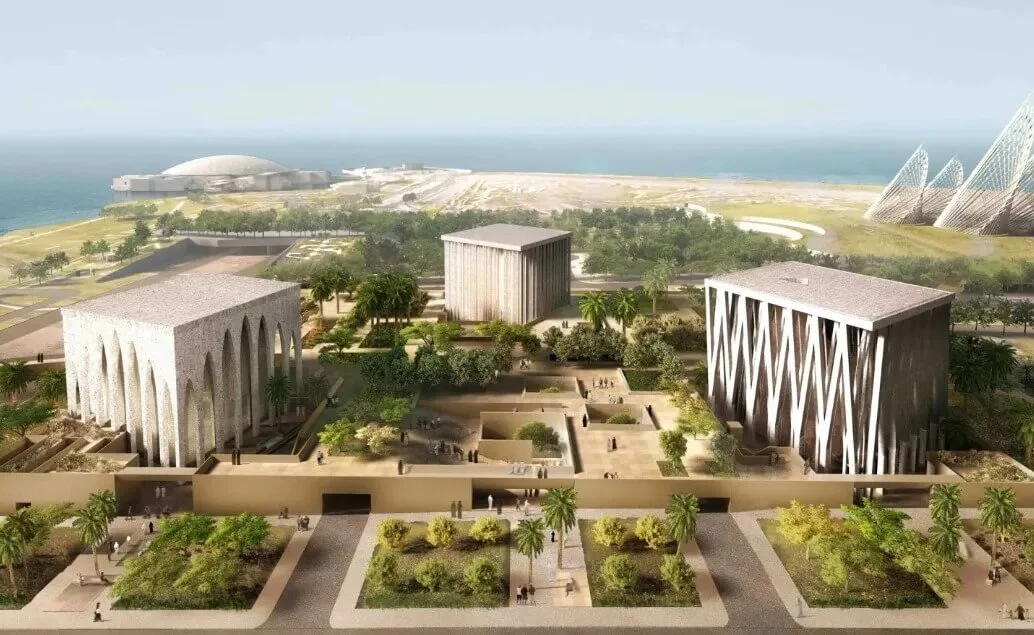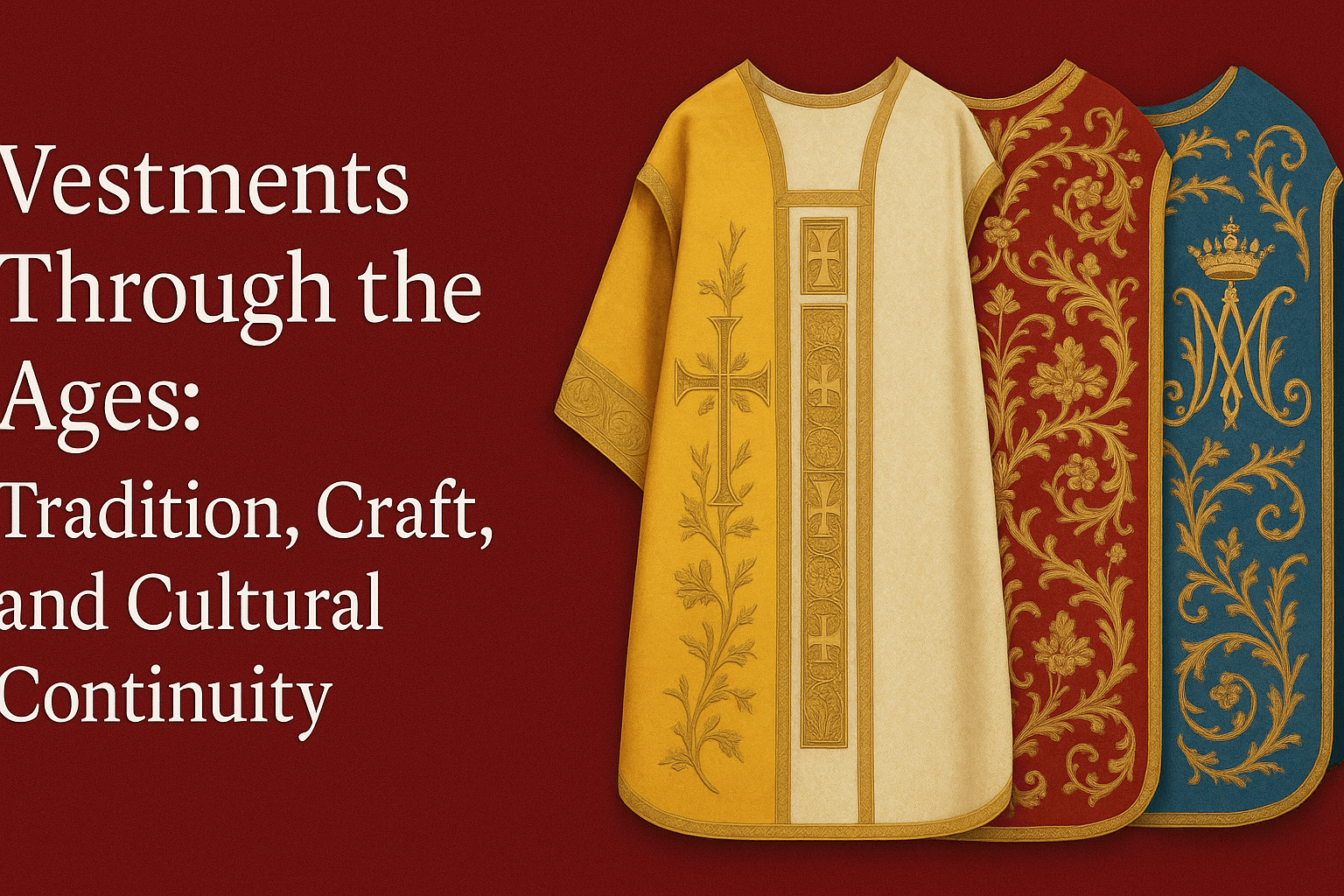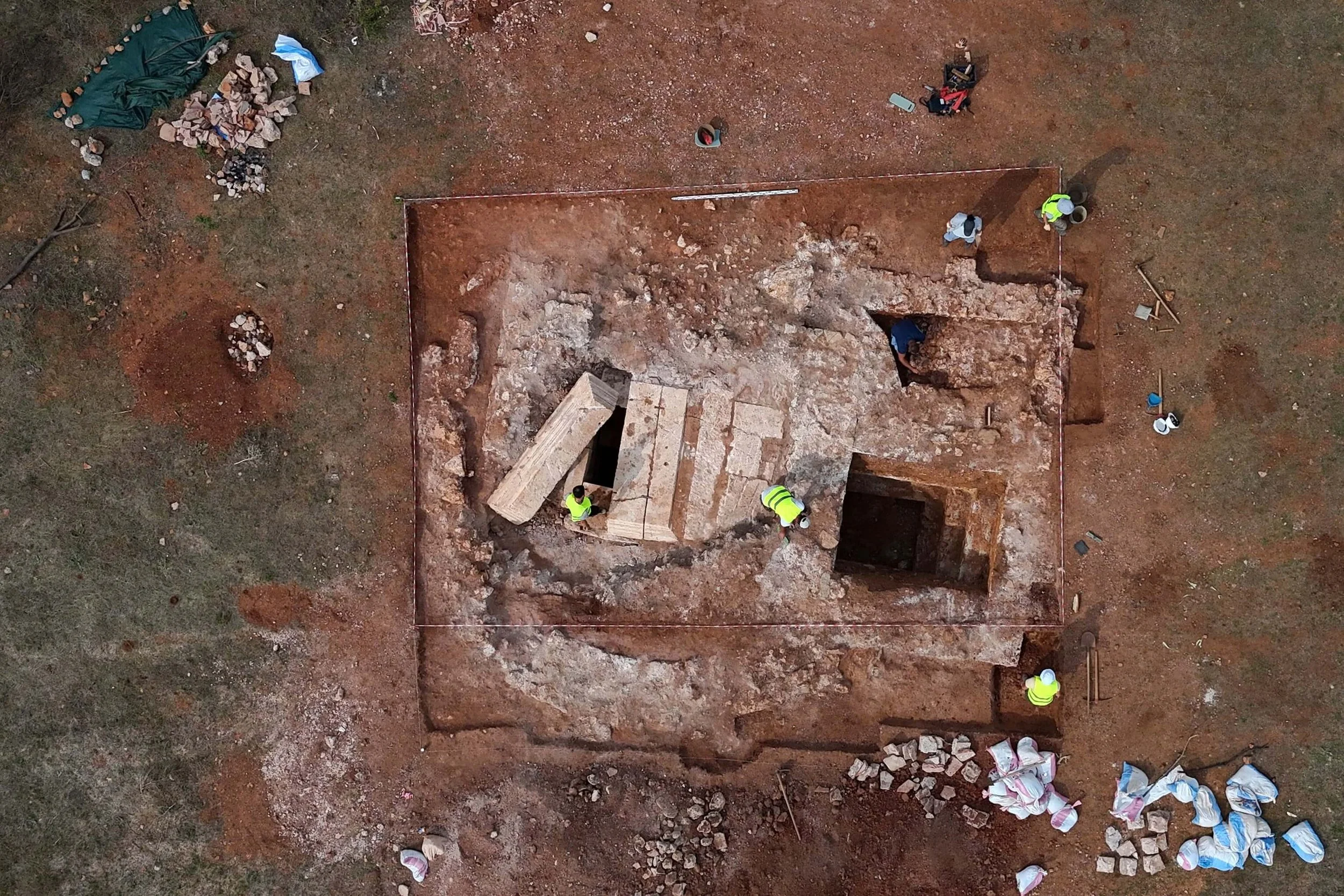Greece is a land where history is never far from view — yet beyond the famous names like the Acropolis, Delphi, and Olympia lies another world of ancient wonders, quieter and often overlooked. Scattered across islands, mountain valleys, and fertile plains are archaeological sites that once thrived with commerce, worship, athletic contests, and everyday life. Many remain blissfully free of the crowds, offering the rare chance to wander through ruins in near solitude while the landscapes that shaped them stretch out around you.
This summer, whether you’re island-hopping or road-tripping through the mainland, make time to step off the beaten path. The following 10 sites may not dominate guidebook covers, but each holds stories, artistry, and atmosphere that can rival — and sometimes surpass — Greece’s most famous monuments.
1. Ancient Karthea (Kea) — A Stunning Blend of Landscape and History
photo source: Europa Nostra
Karthea, located on the southeastern coast of Kea, was one of the island’s four powerful, autonomous city-states, continuously inhabited from the Geometric period (8th century BC) until the mid–Late Antiquity (6th century AD). It stands out for its remarkably preserved ancient harbor: a submerged port about 525 feet (160 m) long and 115 feet (35 m) wide, built from stone and gravel, still visible between two coves.
Reaching this historic site requires a hike (or a sea route), which adds an adventurous touch and an authentic sense of exploration. The most popular trail begins at Stavroudaki and takes about an hour, so be sure to bring water, a hat, and sturdy footwear. This is a rare blend of pristine natural beauty, historical memory, and conscious archaeological preservation, brought to light through careful scholarly work.
Among the ruins, you’ll find the foundations of the Doric Temple of Athena and the Archaic Temple of Apollo (Pythion), both clear markers of the city’s religious life, social cohesion, and artistic development. The remains of the old fortification system — at least six gates, defensive towers, and public buildings — testify to an organized administration, water supply infrastructure, workshops, and possibly even quarrying activities. Karthea is one of those rare places where nature and history remain inseparably intertwined.
2. Delos — The Radiance of Greek Classical Heritage
Delos, a UNESCO World Heritage Site since 1990, is considered one of the richest and most extensive archaeological sites in the Mediterranean. Regarded in antiquity as a sacred island, it was the mythical birthplace of Apollo and Artemis, and it flourished in the 5th century BC when Athens established the treasury of the Delian League there.
Today’s visitors can walk among temples, statues, plazas, and marketplaces such as the Agora of the Competaliasts, once a bustling commercial center adorned with marble monuments dedicated to Hermes. In its prime, it was lined with shops and monuments funded by merchants and bankers from across the ancient world.
Particularly striking are Delos’ exceptional mosaics from the Hellenistic period (late 2nd–early 1st century BC), which account for about half of all surviving mosaics from that era. They showcase both geometric and naturalistic patterns, crafted using the opus tessellatum and opus vermiculatum techniques.
The Temple of the Delians, a Doric peripteral temple originally financed by Delos and the League, reflects the island’s religious grandeur. Although damaged during the Mithridatic Wars, its foundations and traces of its columns still stand.
Uninhabited since the 7th century AD, the island’s isolation has preserved its archaeological remains in remarkable condition, offering an almost untouched snapshot of a thriving ancient cosmopolitan center just a short boat ride from Mykonos.
3. Ancient Messene — A Masterpiece of Classical Urban Design
Columns by the stadium at Ancient Messene, with the Grave Monument visible near the end. Peulle
Nestled in the heart of the Peloponnese, Ancient Messene is one of the best-preserved cities of classical antiquity, founded in 369 BC by the Theban general Epaminondas after the Battle of Leuctra. It served as the capital of the newly liberated Messenian state, complete with impressive fortifications stretching nearly six and a half miles (10 km), which remain among the most complete defensive walls of ancient Greece.
What makes Messene extraordinary is its sheer scale and the quality of preservation. Visitors can wander through the ancient theater, which once seated thousands and hosted both dramatic performances and political gatherings. The Asclepeion (healing sanctuary dedicated to Asclepius) offers a glimpse into ancient medicine, with surrounding stoas that once bustled with pilgrims seeking cures.
The city plan follows the Hippodamian grid, reflecting an advanced approach to urban planning. Public fountains, gymnasia, and sanctuaries were carefully integrated with residential areas, and the agora served as the vibrant heart of civic life. Walking its streets feels like stepping directly into the 4th century BC — yet without the massive tourist crowds found in more famous sites like Delphi or Olympia.
4. Ancient Corinth — Gateway Between Two Worlds
The remains of the archaic temple of Apollo, Corinth (550-530 BCE). Originally, there were 6x15 Doric monolithic columns. - Mark Cartwright
Situated on the narrow Isthmus of Corinth, this city was one of the most strategically important locations in the ancient world, controlling trade between mainland Greece and the Peloponnese. Its history stretches from the Neolithic era through the Roman period, with layers of monuments revealing a cosmopolitan past.
Dominating the site is the Temple of Apollo, a 6th-century BC Doric structure whose stout limestone columns still stand in stark beauty against the sky. Corinth was famed for its wealth, artistic production — especially Corinthian pottery — and for the Diolkos, a paved roadway that allowed ships to be transported overland between the Aegean and Ionian seas.
Above the ancient city rises Acrocorinth, a massive fortified hill that served as both a military stronghold and a sanctuary. From its heights, you can see the Corinthian Gulf on one side and the Saronic Gulf on the other — a reminder of why Corinth prospered as a hub of commerce and culture for centuries.
5. Ancient Kamiros (Rhodes) — A City Frozen in Time
On the northwestern coast of Rhodes, the archaeological site of Kamiros offers a rare, intact example of a Hellenistic city, abandoned not through war but by gradual decline. Established in the Geometric period and rebuilt after a 5th-century BC earthquake, Kamiros flourished as one of the island’s three principal cities alongside Lindos and Ialysos.
The site’s terraced layout is striking: the acropolis at the top, with the Temple of Athena Kameiras; the residential quarter in the middle; and the public spaces and fountain square below. Stone-paved streets and remnants of houses offer a tangible sense of daily life — from cisterns for water collection to storerooms for agricultural goods.
Unlike more monumental ruins, Kamiros feels intimate and human-scaled. Standing amid its quiet streets, with the sea visible in the distance, you can almost hear the bustle of a small but thriving port community that once traded with the wider Mediterranean.
6. Dodona — The Voice of the Sacred Oak
Author Marcus Cyron
In the lush Epirus region, Dodona is one of Greece’s oldest oracular sites, predating even Delphi. Dedicated to Zeus and his consort Dione, it was famed for its unique method of prophecy: priests and priestesses interpreted the rustling of the sacred oak leaves and the sound of bronze cauldrons struck by chains in the wind.
The sanctuary flourished from the late Bronze Age and reached its peak in the 4th–3rd centuries BC under the Molossian kings. A monumental theater, capable of seating some 18,000 spectators, was later adapted for Roman gladiatorial games. Surrounding structures included temples to Zeus and Dione, stoas, and administrative buildings.
Today, Dodona retains a mystical quality — partly due to its remote, mountainous setting and partly because the site still seems to whisper ancient secrets. Visiting here feels less like ticking off a tourist destination and more like entering into a dialogue with the natural and divine forces that once shaped Greek spirituality.
7. Amphipolis — Mystery on the Strymon River
View of the Amphipolis Tumulus with the findings discovered on its southwestern side.
Photo: Hellenic Ministry of Culture
Located in Central Macedonia near the banks of the Strymon River, Amphipolis was founded by Athenians in 437 BC as a strategic stronghold to control the vital gold and silver mines of Mount Pangaion and the timber trade from the surrounding forests. It soon fell under Spartan, then Macedonian, and eventually Roman control, becoming a wealthy hub along the Via Egnatia.
The site gained global attention in 2014 when the enormous Kasta Tumulus burial mound was uncovered, revealing impressive marble sphinxes, caryatids, and intricate floor mosaics — sparking debates about the identity of the tomb’s occupant. While the tumulus itself is not yet open to the public, the surrounding archaeological area offers much to explore, including the famous Lion of Amphipolis, a monumental 4th-century BC sculpture that once stood at the city’s entrance as a symbol of power and prestige.
Strolling the ruins, you can trace remnants of the city walls, early Christian basilicas, and residential districts. Amphipolis holds a unique allure: part battlefield, part commercial center, part archaeological enigma, waiting for more of its story to emerge from the soil.
8. Ancient Lefkada — Echoes from the Ionian Past
While Lefkada is best known today for its beaches, the island also hides an ancient past. Archaeological evidence points to early settlements dating back to the Paleolithic era, with the most significant remains located near Nydri, associated with the prehistoric center possibly linked to Odysseus’ Ithaca in the theories of archaeologist Wilhelm Dörpfeld.
Visitors can explore the ruins of ancient fortifications, cyclopean walls, and sanctuaries dedicated to Apollo. The archaeological museum in Lefkada town complements the experience, displaying pottery, tools, and artifacts that reveal the island’s role in the Ionian trade networks.
Ancient Lefkada is not a sprawling site like Messene or Knossos — instead, it offers a mosaic of smaller discoveries set against the island’s lush scenery. For travelers willing to combine cultural exploration with seaside relaxation, it’s a perfect balance of past and present.
9. Knossos — The Labyrinth of the Minoan World
Just outside Heraklion in Crete, Knossos is the most famous Minoan palace and one of the most important archaeological sites in Europe. Occupied since the Neolithic period, it reached its peak between 1900 and 1450 BC, serving as the ceremonial and political center of Minoan civilization.
The palace complex is a maze of over 1,000 rooms connected by corridors — a design that may have inspired the myth of the Labyrinth and the Minotaur. Visitors can walk through reconstructed sections, including the grand staircase, the Throne Room, and the vibrant frescoes depicting dolphins, dancers, and ceremonial processions.
The site owes much of its current appearance to the controversial early 20th-century restoration work of Sir Arthur Evans, who used reinforced concrete to recreate parts of the palace. While debated among archaeologists, this reconstruction offers an evocative, if partly speculative, sense of the Minoan aesthetic.
Knossos blends myth, history, and archaeology in a way few places can, making it an unmissable stop for anyone seeking to understand the deep roots of Greek — and European — civilization.
10. Nemea — Where Myth Meets Athletic Glory
Author Ophelia2
Tucked in a peaceful valley of the northeastern Peloponnese, Nemea is best known from mythology as the lair of the Nemean Lion, which Heracles slew as the first of his twelve labors. But beyond legend, Nemea was also one of the four venues of the Panhellenic Games (alongside Olympia, Delphi, and Isthmia), attracting athletes, poets, and dignitaries from across the Greek world.
The archaeological site, active from the 6th century BC onward, centers around the impressive Temple of Zeus. Its towering limestone columns — three of which still stand in their original position — give a sense of the scale and solemnity of the sanctuary. Around it, you can trace the foundations of other sacred buildings and treasuries, as well as the ancient baths used by competitors before their events.
The nearby stadium, remarkably well preserved, includes a 600-foot (180-meter) track, stone starting lines, and the vaulted entrance tunnel through which athletes would enter, cheered on by spectators seated on grassy embankments. Walking through this tunnel, you get the uncanny feeling of following directly in the footsteps of ancient runners.
Today, Nemea remains quieter than Olympia or Delphi, yet its blend of myth, sport, and archaeology makes it one of Greece’s most atmospheric sites — especially during the modern revival of the Nemean Games, where visitors can participate in races on the ancient track barefoot, just as in antiquity.



